While you might enjoy a day out on the water without having to think too hard about where your lure is in the water, sometimes it helps to know exactly where the fish are in the water. That’s where a fish finder comes into play.
Fish finders use sonar to create an image of the underwater area around your boat so that you can be better equipped to understand where the fish you are looking for are. You will be able to see groups of fish and individual fish out on the water. It can even help you find structures that certain kinds of fish might like to hang out around.
This can help you understand the water that you’re in and it can help you fish with a little more efficiency when you’re out on the water. A fish finder can even help kayakers that want to know about the area around them in case they decide to get out of the kayak.
In this article, we’ll go over the different kinds of fish finders and what they’re useful for. We’ll also be providing you with a list of our best fish finders that you might find useful.
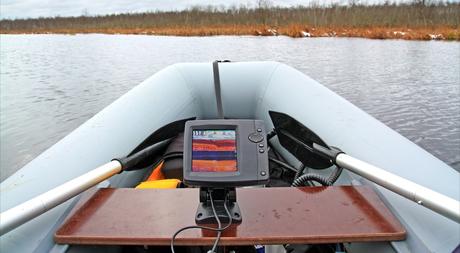
How Does a Fish Finder Work
To start, we should really talk about how different fish finders work. There are three different types of imaging. They range in accuracy and purpose. They are all based on a sonar system to create an image. Their accuracy and the kind of image that they create depends on the type of sonar that they are. There are pros and cons to each type, which is why they are useful for different things.
1. Standard Sonar
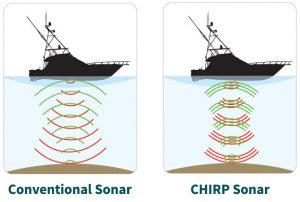
The problems with the standard sonar are that they aren’t usually extremely accurate. They have become more sophisticated over time, but these sonar types are still rough. They aren’t always capable of showing an accurate readout of the depth, but for finding fish they can work quite well.
Because they aren’t that detailed on the screens, it takes a little bit of time to understand how you’re supposed to read them. Once you get the hang of it, though, you’ll find that they can be quite useful.
2. Down Imaging
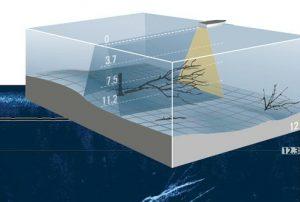
This means that the technology is a little more expensive, but it can make seeing what’s going on a little easier. Instead of your sonar getting stuck on a field of weeds below the surface of the water, you’ll be able to see that there is a field of weeds. Being able to accurately see the water below can help you understand where the fish are hanging out.
The downside of this imaging type isn’t just the price, but the time that it will take you to learn and understand this technology. However, fish finders that contain a more accurate sonar system will also often have a more typical sonar set up as well that you can toggle between. That’s a pretty nice system to have.
3. Side Imaging

There are side imaging sonars that are sold separately, but you will also find the technology bundled in with the other two types of sonar. Side imaging can work well on its own, but it works extremely well with the other types of technology behind it. It is also a little bit more expensive and harder to install than the others because of where the sensors need to be. There are always exceptions to this rule, but it’s just something to keep in mind.
How to Choose the Best Fish Finder
When you’re considering a fish finder, you will need to think about what you’re going to use the fish finder for. Obviously, the fish finder can also be used to help you see what’s going on in the water below you. This can help kayakers that want to go swimming in the water. They don’t want to jump into a shallow area or an area where they could get hurt.
But three different types are going to let you see different things. The side imaging sonars are much more useful for seeing the area around you and helping you to get a sense of what the underwater landscape looks like. This is useful for people that are looking for particular kinds of structures for fishing or to check out what’s really going on below them.
If you’re really keen to figure out where the fish are, then you might want a down imaging sonar or a more typical sonar. While it can’t show you everything around you, it can give you a sense of the fish right under you. That can definitely be helpful to some people. With the more detailed views, you’ll even be able to see the plants that are growing below you.
You will be able to understand what you need the most. You might have to base your choice on what you’re doing, or you might focus more on the price of the fish finder. However, we have options for almost everyone. We’ll be going over the best fish finders out there. One of these will be able to do what you need.
8 Best Fish Finders 2017 – Reviews and Comparison
1. Raymarine Dragonfly 7 Pro – Best Fish Finder Overall
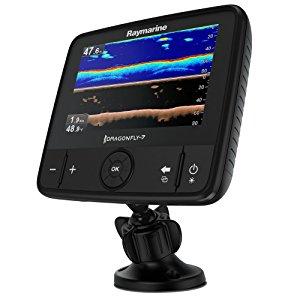
What makes this fish finder just a little less amazing are some technical issues that you may encounter when using this finder. The screen doesn’t a backlight, so when you’re fishing you might have issues reading it in the dark. It also doesn’t have an off button for the wi-fi features. However, the wi-fi feature allows you to share the view on other devices. This can be helpful if there are other fishermen on your boat.
Overall, this is a great fish finder that will be able to show you a great view of the water below you. It’s definitely got great sensors that will get you tons of fish.
2. Lowrance Hook-3X Sonar – Best Cheap Fish Finder
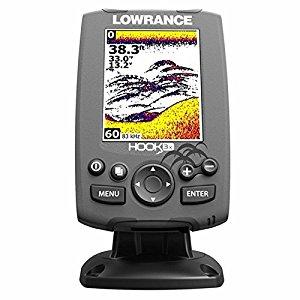
The Lowrance Hook-3X is the kind of fish finder that you need in your life. This is a very minimal device. It only has the one kind of sonar and the screen is very basic. Because of how basic it is, you might find that you struggle with reading the screen at times. I would definitely suggest taking this fish finder out for a couple of practices runs before you take it with you on your important trips.
You will have to do a little extra research to understand exactly what the fish finder means on its screen, but that’s the time that you will have to invest instead your money. However, if you’re looking for as simple of a fish finder as you can get, this is the one for you.
3. Garmin Striker 4 – Best Fish Finder for Kayak
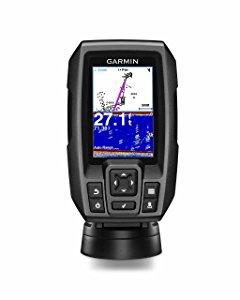
The Striker 4, being compact and easy to use, gives you at least the basics to make your kayaking time more pleasant. The Striker 4 also includes some extras that will make traveling on the water more pleasant. You will be able to track your path and include a waypoint of where you want to go. This will even give you an estimate of how long it will take you to get to your destination.
Although this fish finder may not have a lot of extras when it comes to actually seeing the fish in the water below you, it’s all the extras that can make this a great addition to any kayaking trip.
You might wonder why you should get this version of the Striker 4 instead of the newer version, the Striker 4cv. Well, the range and the features that are included in both are very similar. The 4cv has just a little larger range and transmit area, but also includes the Garmin DownVü sonar. While having this more accurate sonar type is nice, the 4 is very comparable to the 4cv. The price difference is the biggest difference, so if the price is a factor, then I would definitely suggest going with the cheaper Striker 4.
4. Lowrance Elite-7 Ti Touch Combo – Best Fish Finder for Boat
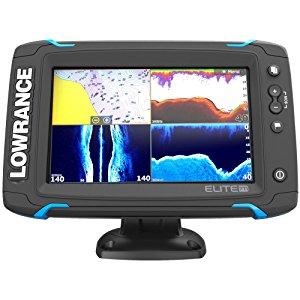
The Lowrance Elite-7 has three types of sonar, which means that you will be able to see all around your boat with little issues. You can use the side imaging to see what’s around you and then use the downward sonar to help figure out exactly where the fish are below you.
This set up is really effective and can work in almost any kind of boat. You’ll be able to go anywhere and really be able to know what you’re doing. Because it does so much, this kind of fish finder is much more expensive than other, more basic versions. However, this price is a small cost when you consider the possibilities that you will have when it comes to fishing.
5. Humminbird HELIX 10 DI GPS – Best Fish Finder Image
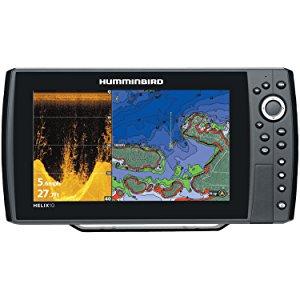
The display on this fish finder is clear and gives you a lot of room to customize what you want to see. You’ll have the choice between three different sonar types, but you’ll also have a map that you can use to help figure out where you’re going or where you want to go. You’re able to customize the screen and adjust what you’re seeing.
For someone that finds other fish finders a little bit frustrating because you can’t deal with the screen setup, this if the perfect fish finder. It is much more expensive than other fish finders because of all the technology that is embedded in this fish finder.
6. Garmin echoMAP CHIRP 53cv – Best Fish Finder for SONAR
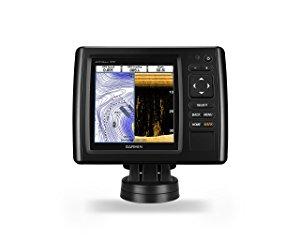
The Garmin echoMAP can help out in that regard. This fish finder has a map and the more detailed sonar as well, but the basic sonar is quite nice on this particular fish finder. You’ll be able to see where you are and you’ll be able to really see what’s going on below you.
Because of its simplicity and the slightly better technology, this fish finder doesn’t have that bad of a price. You will find technology in this that give other large brands a run for their money.
7. Lowrance Hook-7 – Best Fish Finder with Detailed Down Imaging
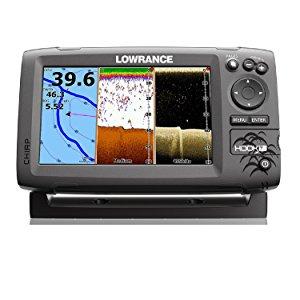
This ability to see so many different views at the same time, ensure that you are capable of getting a good idea of what’s going on below you. There is a lot of information that you might not be able to get with just one sonar type on the screen.
The way that the sonar allows you to do this is with two beams happening at the same time. The more basic sonar will update more frequently, but the image that it has will be harder to read and a little less clear when compared with the more detailed view.
If you’re looking for a great and accurate image of what’s going on below you, then you don’t have to look any further. This comprehensive view makes it great for so many. The fact that its price is reasonable as well, makes this fish finder even better.
8. Humminbird HELIX 5 SI GPS – Best Fish Finder with Side Imaging
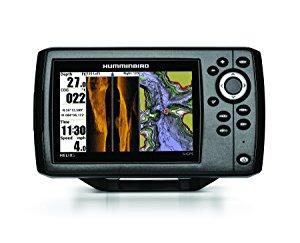
Side imaging isn’t useful for everyone, but this particular side imaging system is a lot nicer than others that are out there. The processing power of this is quite nice and the price of this particular system makes it a great option for many people.
However, this machine doesn’t have lighted buttons, which can cause problems if you’re out on the water when it’s dark out. There are a couple of other minor issues, such as the machine’s time to turn on and the ability to for the fish finder to alert you to fish. If you are paying attention to your screen, then this isn’t a huge issue, but it can be a turn-off for some people.
How to Use a Fish Finder Effectively
Conclusion
When it comes to improving your fishing game, the best way to improve your time is by adding a fish finder. The machine, regardless of how sophisticated or expensive, will allow you to really get a better idea of what’s going on below you. You’ll be able to be more confident in the water and come back with more fish to eat.
However, keep in mind what you’re looking for in a fish finder. There are a lot of options out there, and we’ve covered some great ones here. Consider what you want from your fishing experience, and then move on from there. Hopefully, we’ve given you some great advice that will help keep you at the top of your fishing game.

